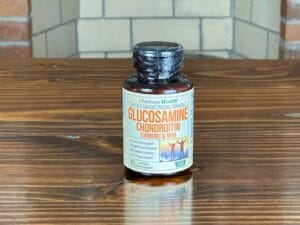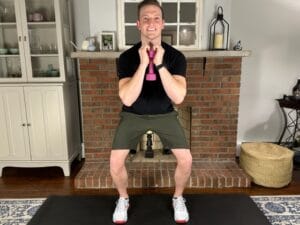Quick Guide: Best Exercises for Pes Anserine Bursitis of the Knee
The best exercises for pes anserine bursitis are the prone quadriceps stretch, straight leg raise, calf stretch on a slant board, sidesteps with a band, hamstring stretch, bridges with a band, and step-downs. These exercises should be completed once daily and should not increase your pain or symptoms. This program was created by a Doctor of Physical Therapy who is an Orthopedic Clinical Specialist, make sure to speak to your healthcare provider before initiating a new exercise routine.
1. Prone Quadriceps Stretch
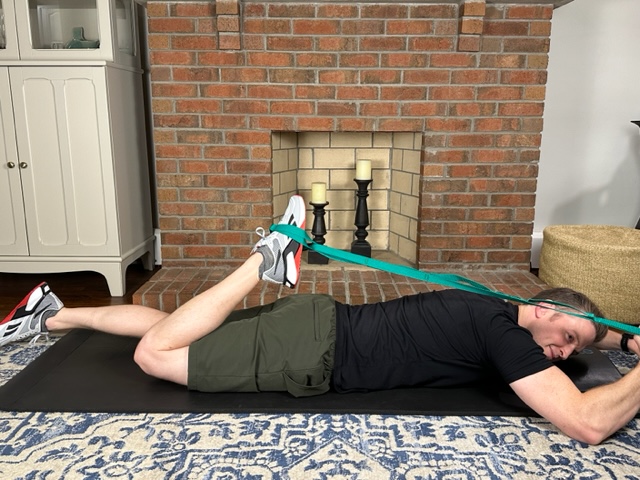
- Stretches the quad muscle and patellar tendon of your knee
- Improves the bend of your knee
- Loop a strap around your foot and pull your heel toward your butt
- Hold this stretch for 10 seconds and repeat 10 times
- Best Stretching Strap in the link below
2. Straight Leg Raise
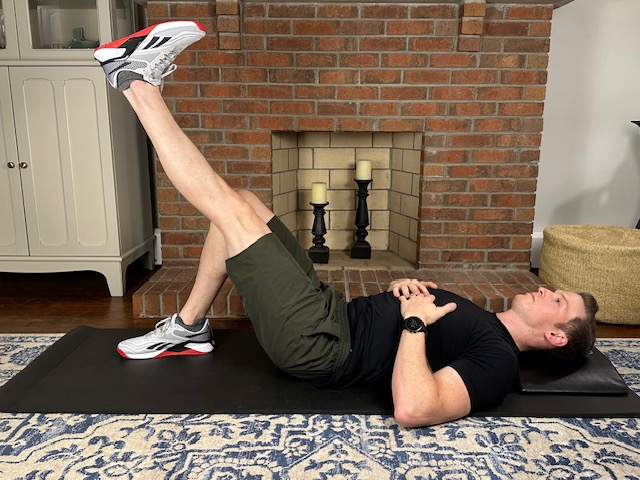
- Strengthens the quad muscle on the front of your thigh
- Reduces pain in your knee by strengthening the quadricep
- Keep your leg straight and lift off the table to the height of your other knee
- Complete 10 repetitions and perform 2 sets
- Best Thick Yoga Mat in the link below
3. Calf Stretch on a Slant Board
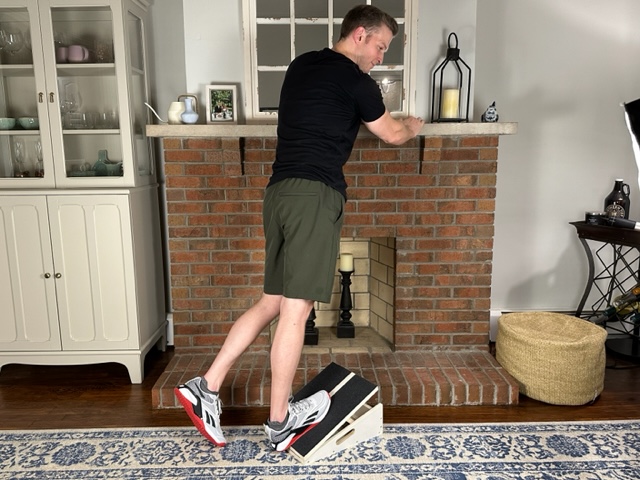
- Stretches the muscle on the back of your lower leg
- Important for getting your knee perfectly straight
- Keep your foot flat on the board and lean forward to feel a stretch
- Hold this stretch for 20 seconds and repeat 5 times
- Best Slant Board for this stretch in the link below
4. Sidesteps with a band
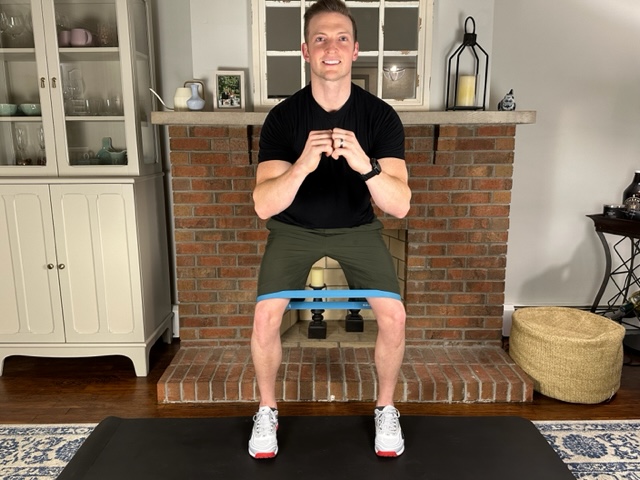
- Strengthens the gluteus medius muscle on the outside of your hips
- Takes pressure off your knee by strengthening your hip muscles
- Sidestep in one direction for 15 steps and then return to the start position
- Complete 3 sets until you feel a burn in your outer hips and thighs
- Best Resistance Bands in the link below
5. Hamstring Stretch
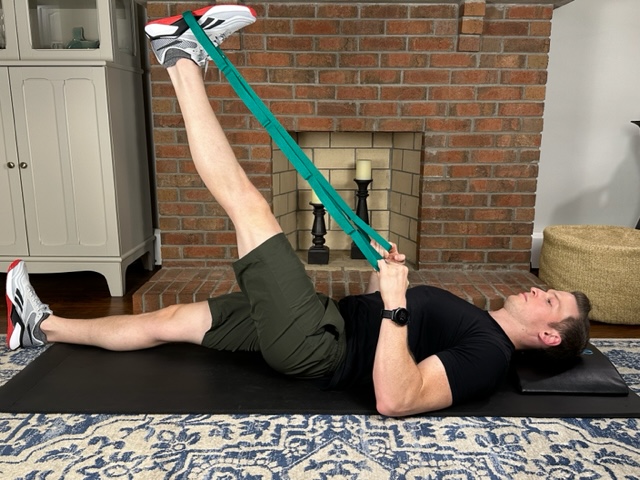
- Stretches the hamstring muscle on the back of your thigh
- Improves flexibility in the muscles behind your knee
- Keep your leg straight and lift off the table with a strap
- Hold this stretch for 20 seconds and repeat 5 times
- Best Stretching Strap in the link below
6. Bridges with band
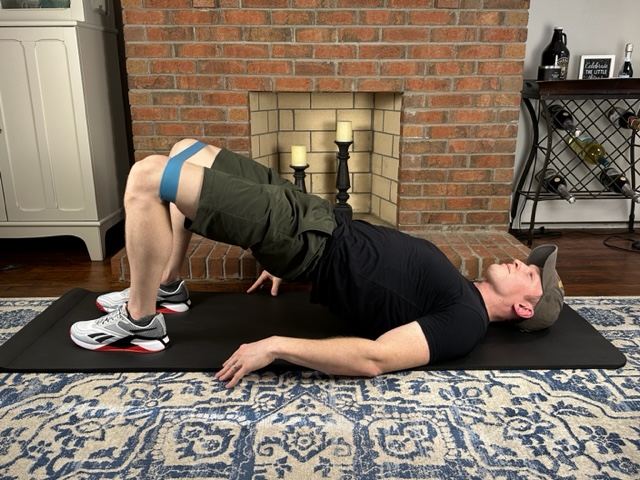
- Strengthens gluteal muscles in your butt and on the side of your hip
- Important for strengthening your knee in the bent position
- Hold the top position for 3 seconds and repeat 20 times
- Complete 1 set and perform 2 times per day
- Best Resistance Bands in the link below
7. Step Downs
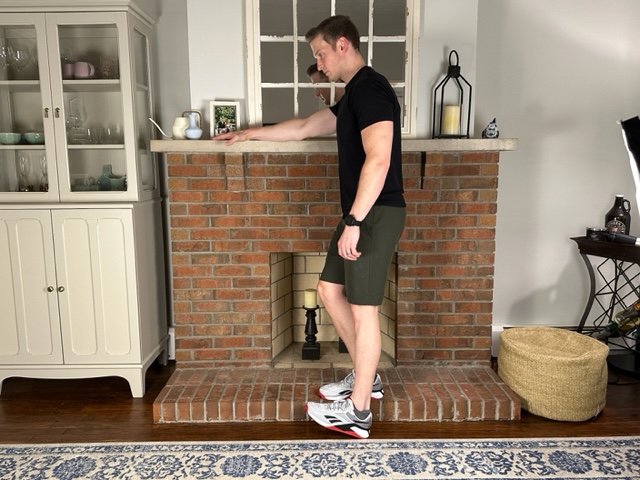
- Strengthens the quad muscle and patellar tendon
- Improves strength in your quad to make stairs easier
- Stand on a stepper and bend your knee to touch your other heel to the ground and back up 10 times
- Complete 2 sets and perform 1 time per day
- Best Stepper in the link below
Bonus: Helpful equipment for pain relief from pes anserine bursitis; Ice Pack and TENS
Bonus: Helpful equipment for completing your pes anserine bursitis exercises
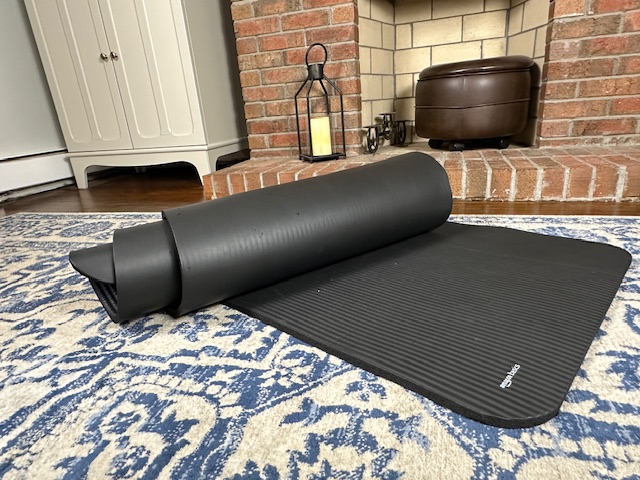
- Thick Yoga Mat provides a soft surface to complete exercises on
- It is lightweight and can be rolled up for easy storage
- You can use it for other stretching and exercise routines as well
- Best Thick Yoga Mat in the link below
Disclaimers and Disclosures: All information in this article is for informational and educational purposes only and should not be taken as individual medical advice. Additionally, this article contains affiliate links, meaning when you make a purchase, we make a small commission at no additional cost to you. For more information, see our full Disclaimers and Disclosures.
Are you looking for the best exercises for pes anserine bursitis to relieve pain and improve your function?
If you’re looking to relieve pain and maximize your functional potential with the best exercises for pes anserine bursitis, then you’re in the right place! Pes anserine bursitis is a relatively common disorder that causes pain and inflammation just below the front of your knee. A proper physical therapy exercise and stretching routine performed on a daily basis is the most important way to reduce symptoms and restore function.
As a physical therapist with over 10 years of experience, I have seen many patients with pes anserine bursitis. Because of this, I have created an exercise program specifically designed to address the deficits that are present with this condition. I have included the most important exercises for pes anserine bursitis that I prescribe to my patients, to help reduce their pain and get back to their normal activities.
In this article, I will give you an in-depth description of all the exercises you need to be doing for your knee pes anserine bursitis and how to perform them. Additionally, I will provide recommendations for the best equipment that we use in the clinic with all of our patients to help complete each of these exercises.
If you’re looking to get started right away, then check out our quick guide to the best exercises for pes anserine bursitis directly above, and then scroll later in the article for the in-depth descriptions of how to perform them. Also, many people with pes anserine bursitis also have knee osteoarthritis. If this is the case, then make sure to take a look at our article for the best physical therapy exercises to treat your knee osteoarthritis.
In-Depth Exercise Descriptions: What are the best at home physical therapy exercises for pes anserine bursitis?
The best physical therapy exercises for pes anserine bursitis are the prone quadriceps stretch, straight leg raise, calf stretch on a slant board, sidesteps with a band, hamstring stretch, bridges with a band, and step-downs. These exercises should be completed once daily, every day of the week.
1. Prone Quadriceps Stretch

How to perform the prone quad stretch with a strap exercise for pes anserine bursitis.
Start by lying on your stomach and loop the strap around your foot. Gently pull on the strap and bend your knee until you feel a stretch on the front of your thigh and knee. Once you feel the stretch, hold it there for 10 seconds and then relax your leg back to the start position. Perform 10 repetitions.
Professional Tip: “If you need an even better stretch, roll up a thick towel or pillow and place it under your knee and then perform the stretch as described above. You should feel an even stronger stretch on the front of your thigh when you do it like this”.
What is the best equipment for the prone quad stretch exercise?
The Stretch Out Strap is the best option for several reasons. It is 6 feet long and has multiple loops and handles all along its length, so it is good for people of different sizes and allows you to get the most comfortable grip. It is also very durable and we have had thousands of patients use it in our clinic and most of them end up buying one for their own use at home. The Stretch Out Strap can be found in the link below.
2. Straight Leg Raise

How to perform the straight leg raise exercise for pes anserine bursitis.
Start lying on your back with your involved leg straight and your uninvolved leg bent to a 90-degree angle. Tighten the muscle on the front of your thigh, keep your leg straight, and lift it off the table until it is parallel to your other thigh. Pause for a second and then return to the starting position. Repeat this 10 times, take a 30 second break, and perform 2 sets.
Professional tips: “Most of my patients will lift their leg a little too high to start. If you go too far though, you will actually lose tension in the muscle which makes the exercise less effective. Lift your leg just until your knees are the same height and that will do the trick”.
What is the best equipment for the straight leg raise?
It’s nice to have a firm but soft surface to lie on for your exercises. Many of our patients will start their exercises in bed but most people prefer a surface that is a little firmer. A nice thick yoga mat is a good solution to this problem. It can be rolled up for easy storage and can even be thrown in the car and brought on vacation if you prefer rehabbing on the go. The Thick Yoga Mat can be found in the link below.
3. Calf Stretch on a Slant Board

How to perform the calf stretch on a slant board exercise for pes anserine bursitis.
Start by placing the slant board in front of your counter or another stable object you can hold on to. Place both feet on the slant bord with your toes facing forward and your knees nice and straight. Stand tall and then gently lean your whole body forward and keep your heels down on the board the entire time. Once you feel the stretch in the back of your legs, hold it there for 20 seconds and repeat 5 times.
Professional tip: “Start with a gentle stretch at a lower incline. Then, as you gain mobility, you can try higher inclines on the slant board”.
What is the best equipment for the calf stretch on a slant board?
My favorite piece of equipment for performing the calf stretch on the slant board is the StrongTek Professional Wooden Slant Board. This is almost exactly like the slant board we have been using in the clinic with our patients for well over a decade now.
It is adjustable with 5 different angles for calf stretches so you can vary it from 15 degrees all the way to 35 degrees. This allows you to start with a gentle stretch and progress the angle as you gain flexibility. Also, it has anti-slip tread on both the surface as well as the bottom so you can safely perform this stretch without the risk of slipping.
Additionally, it’s made of hardwood plywood which makes it more durable than other slant boards, with up to a 450-pound capacity. Finally, it’s 12”x16” so you don’t have to worry if you have big feet or do this stretch with your shoes one, there will be plenty of room for your feet.
The Slant Board can be found in the link below.
4. Sidesteps with a Band

How to perform the sidesteps with a band exercise for pes anserine bursitis.
Start by standing with a resistance band looped around your thighs, just above your knees. Bend your knees slightly so you are in a mini squat position and press your knees apart, so you are always keeping tension on the band. Make sure to keep your toes pointed forward and slowly step sideways, always keeping a space between your feet.
Take 20 steps in one direction, stay facing the same way, and then take 20 steps back to the start position. Take a 15 second break and repeat 3 times.
Professional Tip: “This exercise is designed to make you feel a bit of a burn in your hips, thighs, and buttock. Start with a light resistance band and once you can get through all 3 sets with relative ease, it’s time to increase the tension of the resistance band”.
What is the best equipment for performing the sidesteps with a band exercise?
The best equipment for the sidesteps with a band exercise is a set of loop resistance bands that are easy to put on and take off. These are the same bands that you used for the bridging exercise listed earlier. You will want a set of these bands so you can start with low resistance and slowly increase the tension of the band as you get stronger. The Loop Resistance Bands can be found in the link below.
5. Hamstring Stretch

How to perform the hamstring stretch with a strap exercise for pes anserine bursitis.
Start by lying on your back with both legs straight and the strap around the middle of your foot. Keep your knee straight and use the strap to pull your leg straight up until you feel a stretch in the back of your leg. Once you feel the stretch, hold it for 20 seconds and then lower back down to the start position. Rest for a second or two and repeat this 5 times.
Professional tip: “Having a slight bend in your knee is ok to start out. But as your body gets used to this stretch, you should work to keep your knee as straight as possible”.
What is the best equipment for the hamstring stretch with a strap exercise?
The Stretch Out Strap is also the best option for this stretch as well. It has great utility and can be used for over 20 different stretches that we commonly have patients perform. There is also a version of this strap that is about a foot longer, the Stretch Out Strap XL, and it works well for people taller than 5’10’’. The Stretch Out Strap can be found in the link below.
6. Bridges with a Band

How to perform the bridge exercise for pes anserine bursitis.
Begin lying on your back with both knees bent and feet planted on the table or floor. Lift your hips toward the ceiling and squeeze your bum at the top position. Hold this position for 3 seconds and then lower back down to the start. Perform 10 repetitions, take a 30 second break, and repeat for 2 sets.
Professional tip: It is normal to feel this exercise in your back, butt, hamstrings, and even quads. However, we want the primary mover to be your buttock, so make sure to “squeeze your cheeks” in that top position.
Once you have become accustomed to this exercise after about a week, you can add a resistance band to increase the difficulty. Place the band just around your knees and as you lift your hips off the table, gently push your knees apart to create a bit of tension on the band.
What is the best equipment for performing the bridge with band exercise.
A loop resistance band is the easiest way to increase the effectiveness of this exercise. You can simply slide the band over your feet and move it up to position it just above your knees. The band increases the amount of muscle recruitment, which will make your hips and butt stronger. The Loop Resistance Bands can be found in the link below.
7. Step-Downs

How to perform the step-down exercise for pes anserine bursitis.
Start by placing a small step next to your counter or other stable surface. Hold on to the counter and stand on the stepper with your affected leg. Slowly bend your knee and lower the opposite heel to the ground. I like to tell my patients, “pretend there is a potato chip on the ground that you want to touch with your heel, but not crack”. Then stand back up to the start position. Repeat 10 times, take a 30 second break, and complete 2 sets.
Professional tips: Start with a 4-inch step height when you begin this exercise. Once you can perform all the repetitions without pain and with relative ease, increase the step height by 2 inches. A normal height step is 8 inches, so I have my patients work toward this goal.
This exercise is a lot more difficult than it looks, especially on a bum knee. It is also typically a little bit uncomfortable to do when you have bursitis. So, I recommend trying to keep your pain levels below a 2-3/10 when you are doing this exercise and progressing slowly.
What is the best stepper for performing the step-down exercise?
For the step-down exercise, you will want a stepper that is adjustable and that has good traction. The stepper below is nonslip and allows for variable heights so you can progress as your symptoms permit. This stepper is great because of its versality and the number of exercises you can do on it. We have hundreds of patients do dozens of different exercises on them, so they come in pretty handy. The Stepper can be found in the link below.
Helpful equipment for pes anserine bursitis: Ice and TENS
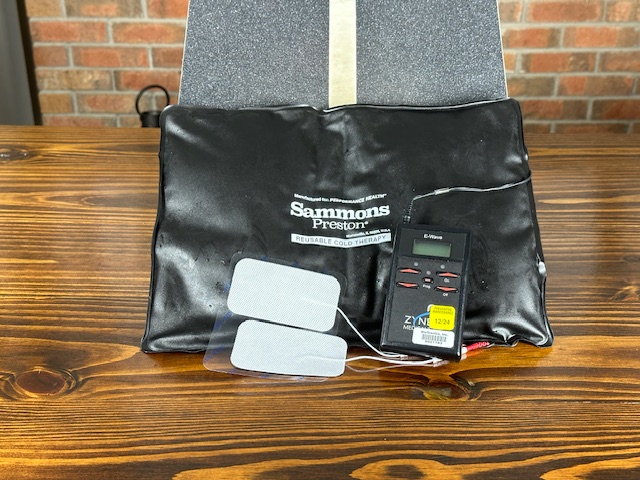
How to use Ice and TENS on pes anserine bursitis.
I like to have my patients lie on their back with their leg propped up so the knee is above heart level, this will also help with getting rid of the swelling. Then I place the pads of the TENS unit on either side of the knee cap. If you have a specifically tender area, then place one of the pads on that spot. I then wrap the knee in a pillowcase to place a barrier between the skin and the ice, and then I’ll place one ice pack behind and one on top of the knee so the whole joint is surrounded.
Professional tip: “Turn up the TENS until you feel a comfortable tingling sensation. This isn’t one of those “the stronger the better” scenarios, so only increase the TENS until it is at a very comfortable level for you. Keeping the ice and TENS on for 10-15 minutes at a time seems to be the optimal timeframe for reducing pain and inflammation”.
What is the best ice and TENS for pes anserine bursitis of the knee?
It’s pretty hard to beat the TENS units we have in the clinic. But considering those units are over $3,000, this portable unit with great reviews for under $50 is an excellent alternative. This unit comes in a travel case, with two channels allowing for 4 electrode placements, and runs on a 9-volt battery. Consider this simple but effective pain relief. The TENS Unit can be found in the link below.
These ice packs are exact replicas of the ones we use in the clinic, and our patients love them! I have had so many patients ask for a recommendation on where they can get the ice packs that we use. They are sick of hard ice packs that don’t conform, or using bags of peas from their freezer that just don’t work as well as they want them to.
These ice packs are large, reusable, and conform to various body parts so you can use them over and over again on any aching joints. I suggest you get a small and a medium so you can wrap your entire knee, front and back. Some people like to get a handful of the ice packs so they can keep one sets in the freezer, nice and cold, while they’re using the other set. The Ice Pack can be found in the link below.
Best Exercises for Pes Anserine Bursitis Final Thoughts
Having pes anserine bursitis can be painful, annoying, and truly limit your functional ability. I have seen firsthand how this can negatively impact people’s lives. This is the reason I created the exercise program above. I have had helped many patients use this program to successfully treat their pes anserine bursitis.
The trick is to be diligent with your exercise routine and perform it consistently every day. In a matter of a few weeks, I have faith you will be back to all the activities you love to do, and hopefully pain-free!
Why trust Physical Therapy Simplified for pes anserine bursitis exercises?
At Physical Therapy Simplified, our mission is to provide an easily accessible and highly reputable source of physical therapy information that anyone can understand, follow, and benefit from. We want you to feel confident that you are getting the best content and information that will help to reduce your pain and restore you to your highest functional potential.
The author of this article, Andrew Harkins, DPT, has demonstrated expertise in the field of physical therapy and is certified by the American Board of Physical Therapy Specialities as an Orthopedic Clinical Specialist. He has over ten years experience as a licensed physical therapist and is an expert in treating conditions related to the knee.
Andrew has worked as a teaching assistant at the University of Pittsburgh in their Doctor of Physical Therapy Program. Specifically, due to his expertise in treating knee conditions, he assisted in musculoskeletal coursework and provided instruction on how to treat patients with knee pain.

